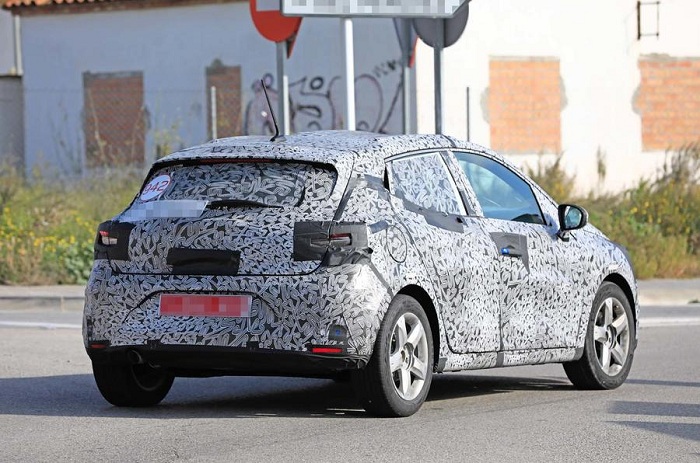Still decked out in heavy camouflage, but reportedly equipped with production headlights, which appears to have been taken from the Zoe electric car, the Clio will allegedly take styling inspiration from Symbioz concept shown in Frankfurt last year, and make use of the CMF-B platform that also underpins the Nissan Micra.
In an interview with Britain’s Autocar though, Renault Head of Design, Laurens van Den Acker, stated that the final design has already been approved, adding that, “it’s going to be great. It has to be. It will be the best Clio we’ve ever done”.
As previously reported, the Clio will become the first model of its kind to offer Level 2 autonomous driving, a move Renault claims will make it the most advanced in its segment, and according to van Den Acker, an interior that will silence criticism of the current model’s cabin.
“That’s really where we’ve been criticised in the last few years, and we’re trying to create a very coherent concept,” he said, following on from reports by the publication that the Clio will adopt a large portrait-style infotainment system similar to the Tesla Model S, which will house most of the various functions and do away with the greater majority of buttons.
At the same time, the Clio’s array of driver assistance systems will include items such Lane Keeping Assist, Adaptive Cruise Control, Lane Departure Warning, Active Park Assist and “Hands-Off” ability as per the second level of autonomy requirements.

With the exception of the stalwart 1.5 dCi turbodiesel engine, the Clio’s range of powerunits will be brand-new, namely the 1.3-litre turbocharged petrol co-developed with Daimler and already being used in the Mercedes-Benz A-class and B-class, the Renault Kadjar, Scenic/Grand Scenic, Renault/Dacia Duster and Nissan Qashqai, a brand-new 1.0-litre turbocharged triple in place of the current 898 cc unit and later on, a mild-hybrid equipped version of the above mentioned diesel. A plug-in hybrid is only due in 2020.
The Clio RS meanwhile is set to undergo even more of a change, with claims of it dropping the 1.6-litre turbocharged mill for the same 1.8-litre motor powering the Megane RS and Alpine A110, albeit detuned to an alleged 165kW, the same as the outgoing Clio RS 220.
In spite of speculation that the shift in powerunit might result in the RS once being offered with a manual gearbox like the Megane RS, this now appears unlikely after Renault Sport Head of International Sales, Jean Calcat, told Australian media back in September that demand simply does not warrant a third pedal.
“If you look at the numbers, we roughly sold the same number of Clio IV RS that we did Clio III RS, except we didn’t sell them in the same markets. In a manual market like UK, it was not very well received, but in other markets its reception was just great, such as in Japan, where it works very well. So that’s compensation,” goauto.com.au quoted him as saying.
“Now, the product is reaching the end of its lifespan, so we will not invest with going with a manual gearbox. The ideal car would have been the Clio 16 Concept, and we really looked at producing it in small quantities like we did with the Clio V6. Our managing director Patrice Ratti really wanted to market the car, but at the end of the day, we had to accept the fact from the pure profitability standpoint it didn’t make any sense”.
While Renault has so far not made word on the Clio final launch date, speculation is that it could possibly debut at the Geneva Motor Show in March.
















